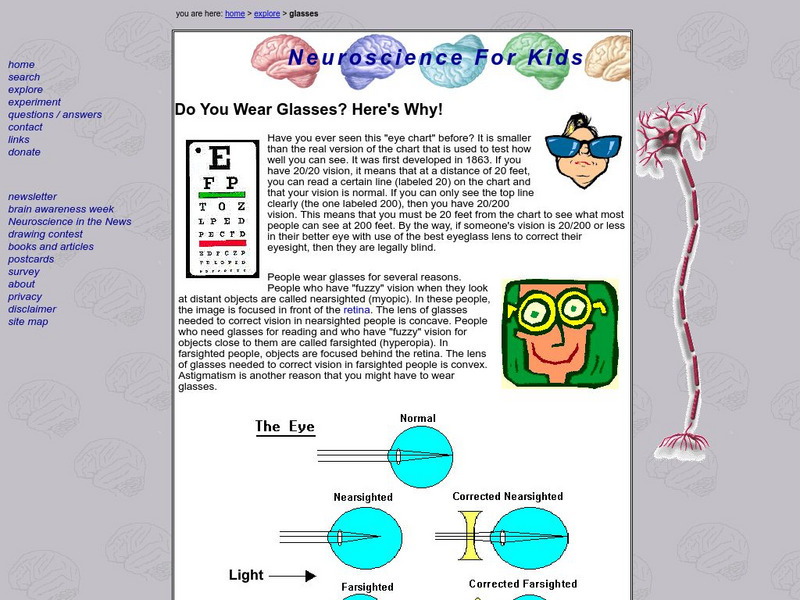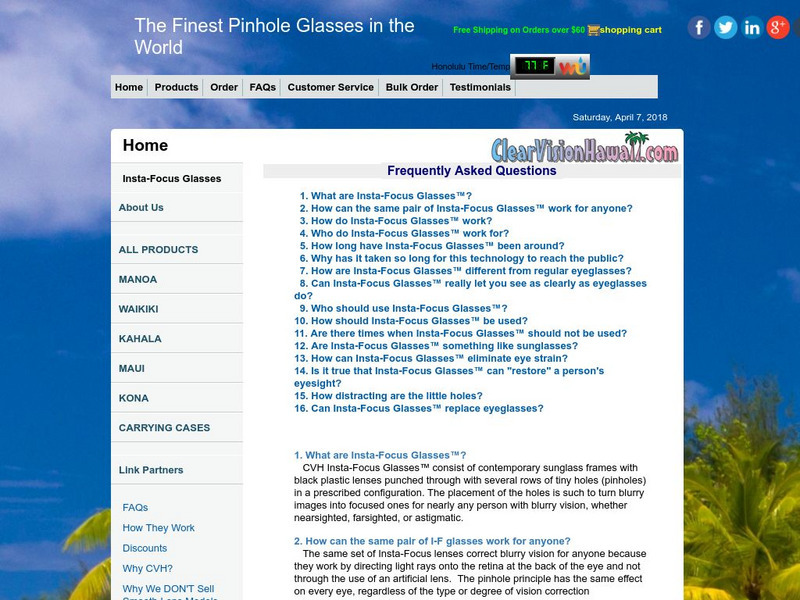University of Washington
Neuroscience for Kids: Do You Wear Glasses?
Have you ever wondered why you may or may not have to wear glasses? Use this explanation to find out the answer. It outlines the normal eye, the nearsighted eye and the farsighted eye. The diagrams are helpful for a more comprehensive...
Curated OER
Kids Health: Taking a Good Look at Glasses
This site from Kids Health provides comprehensive information on how corrective lenses help.
CK-12 Foundation
Ck 12: Life Science: Vision Correction
[Free Registration/Login may be required to access all resource tools.] You probably know people who need eyeglasses or contact lenses to see clearly. Maybe you need them yourself. Lenses are used to correct vision problems. Two of the...
Other
My Prescription: What All Those Numbers Mean
This site explains the meaning of the values of the prescription strength when getting corrective lenses. Includes information on Nearsighted, Farsighted, and Astigmatism lenses.
Science Struck
Science Struck: Lenticular Lenses: Working Principle
Explains what lenticular lenses are, how they work, different applications, and their advantages and disadvantages.
BBC
Bbc: Gcse Bitesize: Lenses
Lenses are precisely shaped pieces of glass that have been developed and used in corrective glasses, telescopes, microscopes, binoculars, and magnifying glasses. They can be convex or concave. Links are provided to a video an a test.
CK-12 Foundation
Ck 12: Physical Science: Vision Problems and Corrective Lenses
[Free Registration/Login may be required to access all resource tools.] Vision problems and how lenses can be used to correct them.
Other
Clear Vision Hawaii: Fa Qs About Pinhole Glasses
Using a question and answer format, this page discusses the technical aspect of pinhole glasses. Defines, illustrates and discusses pinhole glasses.









